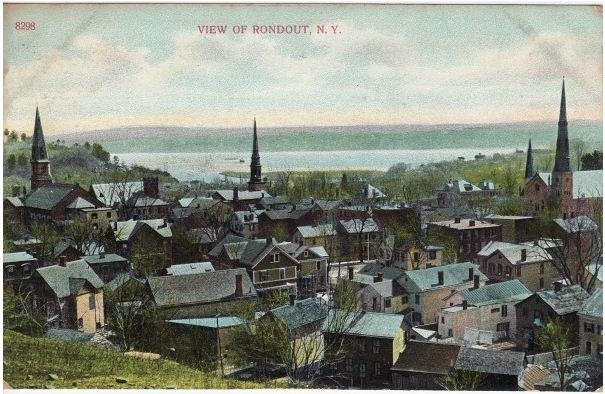
From Harry Rigby, Jr.’s “What’s the Answer” – April 20, 1960
The Reverend Albert H. Shultis, through the intermediary of one of his more promising art students, Miss Posy Tomshaw, has requested an explanation of the several old stones around Kingston – he mentions one preserved in front of Dr. Krom’s office – inscribed “Jail Limits.”
These interesting old markers date back to a sunnier day when there was a great deal less vicious crime but when a jail sentence for lesser offenses was more common. Indeed, if you owed a legitimate debt but through misfortune you were unable to make payment upon demand or upon due date, your creditor could secure a ‘body attachment’ and have you confined to jail until the debt was paid. Of course, in jail the debtor could not work to earn the means of paying off his indebtedness and therefore it was a self-defeating procedure insofar as securing payment was concerned. I suspect, however, that a body attachment was many times taken to pay off a grudge or in a spirit of vindictiveness.
Confinement under those circumstances was cruel and inhuman, so our more charitable ancestors evolved a method of adhering to the letter of the law but combining justice with human mercy.
These stone monuments therefore were set up on most of the main thoroughfares at a point of one mile from the jail. Most of them were marked “Jail Limits – One Mile.” Prisoners in those days, and this was by no means too long ago, were sentenced to a jail which occupied the basement of the present courthouse on Wall Street in Kingston.
If sentenced for a crime which did not involve violence against the person – such as murder, rape, mayhem, aggravated assault and other similar crimes – and he could find a person to sign a bond for him, the prisoner was allowed to leave the jail after breakfast and return for supper and incarceration throughout the night, doing pretty much as he pleased around town, provided he did not walk beyond the jail limit stones at any time during the day. If the prisoner did violate the limit stones or escape permanently or fail to return to jail at suppertime, his bond was forfeited and the man who had signed that bond was forced to pay the sum of money he had agreed to.
For serious crime where a death penalty was inflicted, the execution took place right at the Ulster County Courthouse. The old gallows are still stored in the cupola and were exhibited last year during the Year of History celebration. A very ingenious gallows it is, built like a see-saw but off-center so that one end of the see-saw board is long than the other. To the short end is affixed a very heavy weight and to the other a short length of rope ending in a hangman’s noose. The shorted weighted end was lifted high off the ground so that the noose could be affixed around the prisoner’s neck. When the weighted end was dropped, the prisoner – who was standing on the ground – was jerked into the air, his neck was broken by the knot under his ear, and he was left dangling several feet off the ground. Old newspaper accounts tell of public hangings, attended by most of the public, who brought their picnic lunches and made a festive occasion of it.
Old drawings of the Courthouse show a stocks in front of it, in which minor offenders were locked for a day or two. Seated on the hard bench with both hands and feet locked in the sturdy yoke, and on full public view outside, the poor offender could do nothing but endure the embarrassment, the jibes, and an occasional overripe egg. The public whipping post was also located in the courtyard where prisoners were lashed.
